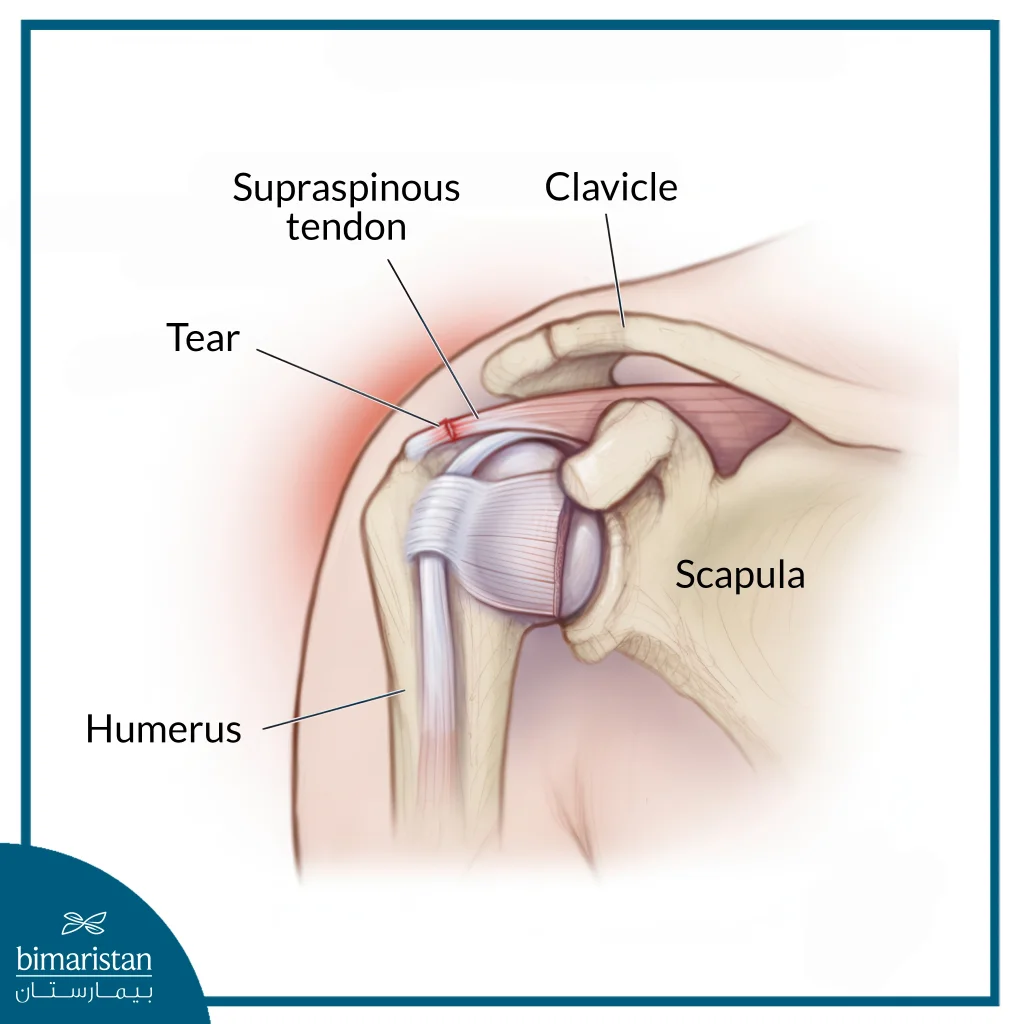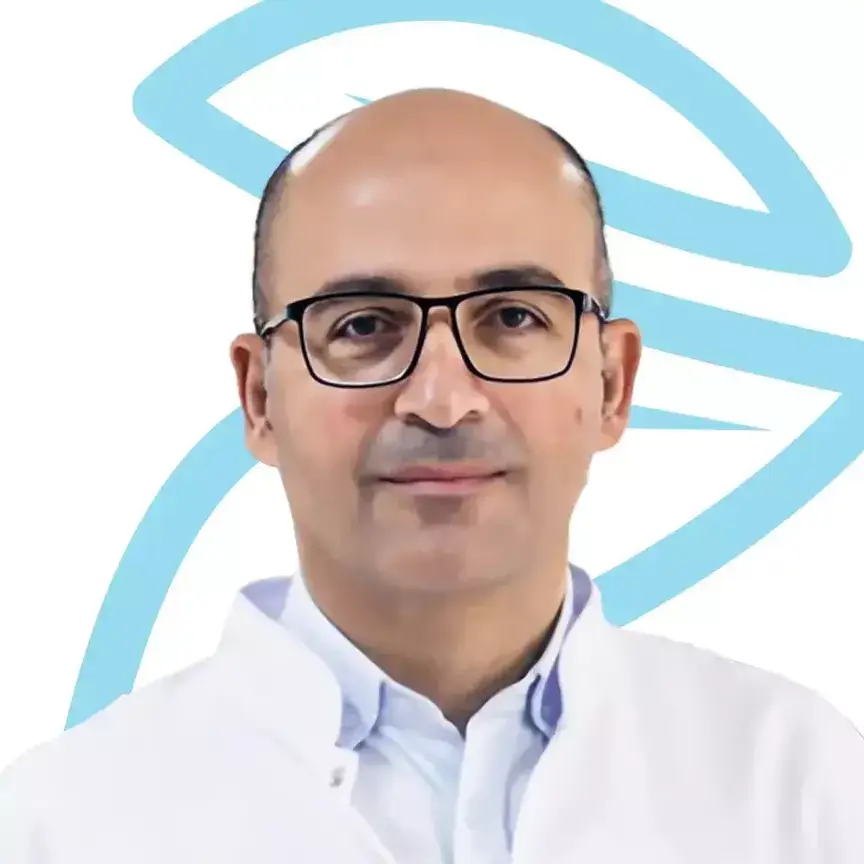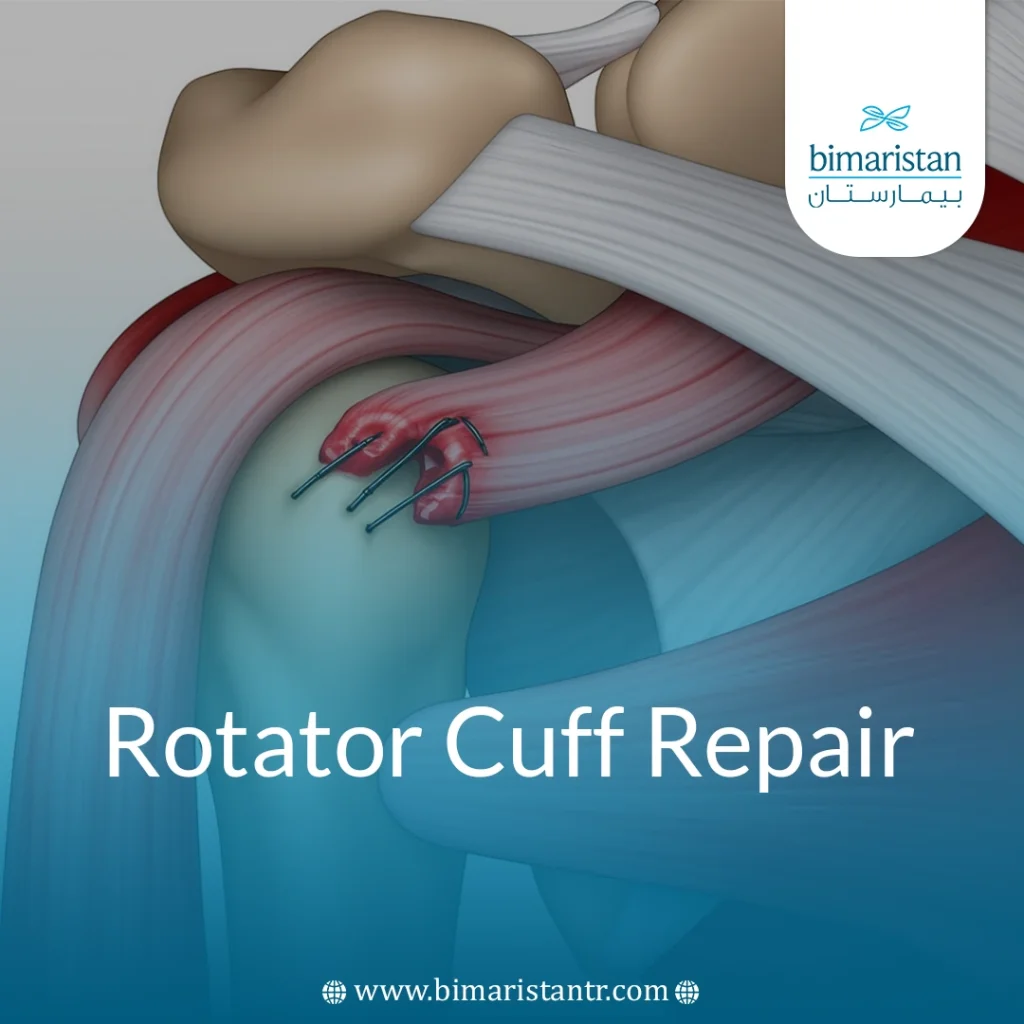The shoulder joint is one of the most complex joints in the human body in terms of structure and function, and is prone to frequent injuries such as rotator cuff tears, and in complex cases of this condition, simple repair may not be sufficient, but requires rotator cuff repair, as studies have shown a clear improvement in patient outcomes in terms of pain and movement after undergoing this surgery.
What is a shoulder tear?
A shoulder tear or what is known as a rotator cuff tear is an injury to the muscles and tendons of the rotator cuff in the shoulder, as it leads to pain in the shoulder and difficulty or loss of the ability to use the arm, as the rotator cuff consists of a group of muscles and tendons that surround the shoulder joint, and helps to lift and move the arm away from the body, as it keeps the head of the humerus bone fixed inside the socket of the scapula, and this tear may be caused by overuse or a direct injury, and there are two types of shoulder tears, namely:
- Partial rupture: In this type, the tear is incomplete, and the tendon is still partially attached to the arm bone.
- Complete rupture: In this type, the tendon is completely separated from the bone, and there is a complete hole or cut in the tendon.

Symptoms of a shoulder tear
A shoulder tear has the following symptoms:
- Dull, deep pain inside the shoulder
- Sleep disturbances
- Difficulty combing hair or reaching behind the back
- Arm weakness with pain
However, some rotator cuff injuries do not cause any pain.
Causes of a shoulder tear
Repetitive overhead movements or prolonged heavy lifting can cause irritation or damage to the tendons, and the injury can also occur as a result of a sudden accident such as a fall or a direct hit. There are some risk factors that may be associated with a shoulder tear, such as:
- Job: Jobs that require repetitive arm lifting, such as carpentry or painting, increase the likelihood of injury.
- Playing sports: Tennis, baseball, and weightlifting are associated with common shoulder injuries.
- Genetic factor: These infections tend to occur more often in certain families, suggesting a possible genetic factor.
- Age: The risk increases after the age of 50.
Diagnosis of a shoulder tear
A shoulder tear is initially diagnosed through a clinical examination in which the doctor presses on certain different parts of the patient’s shoulder and moves the arm in multiple positions. and also performs a test of the strength of the muscles surrounding the shoulder and arm. Imaging tests also help diagnose a shoulder tear such as:
- X-ray: Although a rotator cuff tear is not immediately apparent on an X-ray, this test is used to detect the presence of bone spurs or other possible causes of pain, such as shoulder tendonitis.
- Ultrasound: This test uses sound waves to produce images of the body’s internal structures, especially soft tissues such as muscles and tendons. It allows the doctor to evaluate the shoulder during movement and allows for a quick comparison between an injured and healthy shoulder.
- Magnetic resonance imaging (MRI): Uses a powerful magnet to produce precise images that show all components of the shoulder in high detail, helping to pinpoint the exact location and severity of the tear.
What is rotator cuff repair?
Rotator cuff repair is recommended if there is a complete tear or if non-surgical treatments have not worked for a complete or partial tear, and surgery may also be necessary if the patient’s work or athletic activity affects the function of the shoulder.
Most rotator cuff repair surgeries are performed arthroscopically through small incisions in the skin, and the surgeon may use the open route in some cases if necessary, and rotator cuff repair surgery is a simple operation, as the patient returns home on the same day, but the recovery period after the operation may be long and require commitment, and may extend to more than a year, and the steps of the operation include the following:
- Inserting a small scope (camera) through a small incision in the shoulder
- Using the images provided by the endoscope to guide the procedure
- Inserting tiny instruments through small incisions to remove bone spurs
- Reattaching the tendon to the upper arm bone
Types of rotator cuff repair
There are several types of rotator cuff repair, where the doctor chooses the appropriate type based on the patient’s condition:
- Arthroscopic Tendon Repair: In this procedure, the surgeon inserts a small camera called an arthroscope and tiny surgical instruments through small incisions to reattach the torn tendon to the bone.
- Open Tendon Repair: In some cases, an open repair is preferable, where the surgeon works through a larger incision to reattach the damaged tendon to the bone.
- Tendon Transfer: If the torn tendon is too damaged to be reattached to the arm bone, the surgeon may choose to use a nearby tendon to replace it.
- Shoulder Replacement: In cases of very large tears, shoulder replacement surgery may be necessary. There is an innovative technique called reverse shoulder replacement, which improves the stability of the artificial joint, where the ball portion is mounted on the scapula and the socket portion on the arm bone.
Complications of rotator cuff repair
Any surgical procedure is not without complications and risks, and some of the complications of rotator cuff repair include the following:
- Infection: Patients are given antibiotics during surgery to minimize the risk of infection, but if an infection occurs, it may require additional surgery or prolonged antibiotic treatment.
- Detachment of the deltoid muscle in open surgery: A portion of this muscle may be temporarily detached to improve access to the rotator cuff and then re-sutured at the end of the procedure, but it is very important to protect this area after surgery and during rehabilitation to ensure proper healing.
- Stiffness of the joint: Rehabilitation should be started early to minimize the risk of permanent stiffness or loss of mobility, and stiffness often improves with intensive physical therapy and exercises.
- Recurrent rupture of the tendon: There is a risk of rupturing the tendon again after all types of repair, and this risk increases with larger tears. However, most patients do not experience additional pain or loss of shoulder function after a recurrent tear, and a second surgery is only recommended in cases of severe pain or loss of function.
- Nerve injury: This is often an injury to the nerve responsible for activating the shoulder muscle (deltoid).
Rotator cuff repair surgery, rehabilitation and recovery times
Rehabilitation after rotator cuff repair surgery is very important and is a key element in restoring motor function and reducing complications, as the rehabilitation program usually begins several weeks after rotator cuff repair surgery, and the stabilization period often lasts 4 to 6 weeks, during which the shoulder is prevented from moving the shoulder to facilitate tendon healing, followed by gradual stages of physical therapy starting with passive movements, then active with assistance, and then muscle strengthening.
Full functional recovery takes 4 to 6 months, and some patients may require up to 12 weeks to regain full strength and range of motion, especially in complex cases or in professional athletes.
Non-surgical shoulder tear treatment
The doctor may resort to conservative treatments to prevent surgical intervention in cases of partial rupture and minor cases, such as these treatments:
- Rest and ice: It can sometimes be enough to recover from minor shoulder injuries without the need for rotator cuff repair
- Physiotherapy: This is one of the first treatment options suggested, where exercises are tailored to the specific location of the injury and help restore shoulder flexibility and strength.
- Injections: Injections into the shoulder joint may be helpful in some cases, especially if the pain is interfering with sleep, daily activities, or physical therapy sessions. These injections usually provide temporary relief, but may weaken the tendon and reduce the chances of success of any future shoulder surgery.
In conclusion, post-tear rotator cuff repair is an effective treatment for patients with advanced tears that are unresponsive to conservative treatment, and although the procedure is often performed using minimally invasive techniques, its success depends on multiple factors including the size of the tear, the patient’s age, and the level of adherence to the post-operative rehabilitation program.
Sources:
- American Academy of Orthopaedic Surgeons. (n.d.). Rotator cuff tears: Surgical treatment options. Ortholnfo. Retrieved July4, 2025
- National Library of Medicine. (n.d.). Rotator cuff repair. MedlinePlus. Retrieved July 4, 2025



